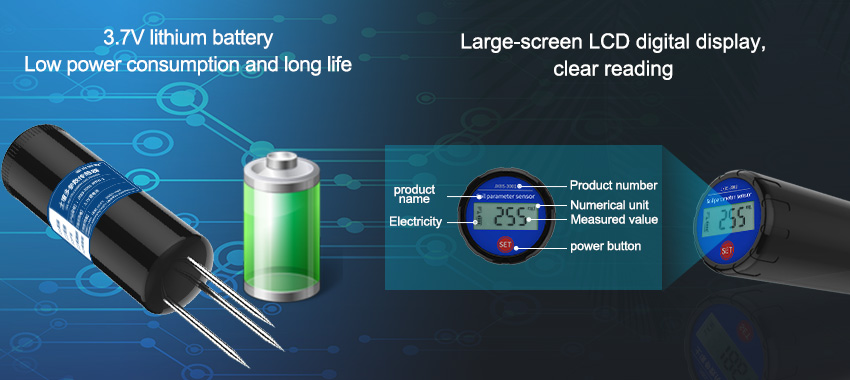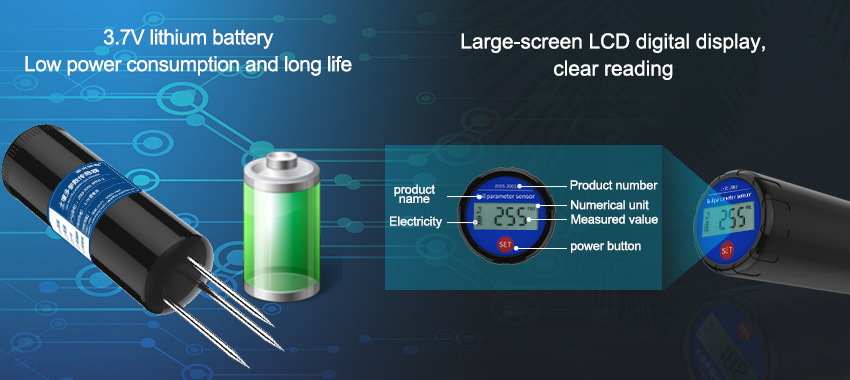Soil health and nutrient levels are vital factors that determine the success of agricultural practices and the overall health of ecosystems. Traditional methods of soil analysis often involve time-consuming and costly laboratory tests. However, with advancements in technology, soil sensors have emerged as a powerful tool to unlock the secrets beneath the surface. These sensors provide real-time data on various soil parameters, allowing farmers and land managers to gain valuable insights into soil health, nutrient levels, and make informed decisions about sustainable land management. In this article, we will explore how soil sensors offer unprecedented insights into soil health and nutrient levels.
Understanding Soil Health:
Soil health encompasses a range of factors, including nutrient content, organic matter, pH levels, microbial activity, and physical structure. Soil sensors can measure these parameters accurately and continuously, providing a comprehensive understanding of soil health dynamics. By monitoring soil moisture, temperature, and electrical conductivity, sensors offer insights into water-holding capacity, salinity, and the presence of impurities. Additionally, sensors that measure the biological activity and carbon content can help assess organic matter decomposition rates and the overall fertility of the soil. By understanding soil health, farmers can implement targeted strategies to improve soil quality and enhance plant growth.

Monitoring Nutrient Levels:
Nutrient management is essential for ensuring optimal crop growth and minimizing environmental impacts. Soil sensors play a crucial role in this regard by providing insights into nutrient levels present in the soil. Sensors equipped with ion-selective electrodes can measure concentrations of specific ions such as nitrogen (N), phosphorus (P), and potassium (K). This information allows farmers to adjust fertilizer application rates based on accurate and real-time data. By avoiding excessive or insufficient nutrient supply, farmers can minimize nutrient runoff, reduce costs, and mitigate the risk of nutrient pollution in water bodies. Soil sensors enable precise nutrient management, leading to improved crop quality, reduced environmental impacts, and increased agricultural productivity.
Assessing Soil Moisture and Irrigation Needs:
Proper irrigation is crucial for plant growth and water resource conservation. Soil sensors provide essential data on soil moisture levels, enabling farmers to optimize irrigation practices. By monitoring soil moisture at different depths, sensors offer insights into water distribution and rooting patterns. This information helps farmers to schedule irrigation based on actual plant needs, avoiding overwatering or underwatering. Effective irrigation management not only conserves water but also prevents waterlogging and reduces the risk of diseases caused by excessive moisture. Soil sensors allow farmers to make informed decisions about irrigation, resulting in improved water-use efficiency and sustainable agriculture.
Detecting Soil Compaction:
Soil compaction, a common issue in modern agricultural practices, can have adverse effects on plant growth and soil health. Soil sensors equipped with penetrometers or pressure sensors can detect soil compaction levels accurately. These sensors measure the resistance of soil to penetration, providing insights into soil compaction at different depths. By identifying compacted areas, farmers can implement targeted soil aeration and tillage practices to alleviate compaction and enhance root development. Preventing and addressing soil compaction leads to improved water infiltration, nutrient availability, and overall soil health.
Enhancing Precision Agriculture:
Precision agriculture relies on accurate and spatially explicit information to optimize resource use and increase productivity. Soil sensors are integral to precision agriculture practices as they provide precise measurements at specific locations within a field. By utilizing soil sensors in conjunction with other technologies such as GPS and remote sensing, farmers can develop detailed soil maps that highlight spatial variations in soil health and nutrient levels. This information facilitates site-specific management strategies, such as variable rate fertilization or irrigation, tailored to the unique needs of different areas within a field. Precision agriculture maximizes resource efficiency, minimizes environmental impacts, and improves overall profitability.
Advancements in Sensor Technology:
Recent advancements in sensor technology have further enhanced the capabilities and applications of soil sensors. Wireless connectivity and the Internet of Things (IoT) have enabled remote data monitoring and real-time alerts. Farmers can access soil sensor data through mobile applications or web platforms, enabling them to make timely decisions based on up-to-date information. Additionally, sensor networks and data integra






